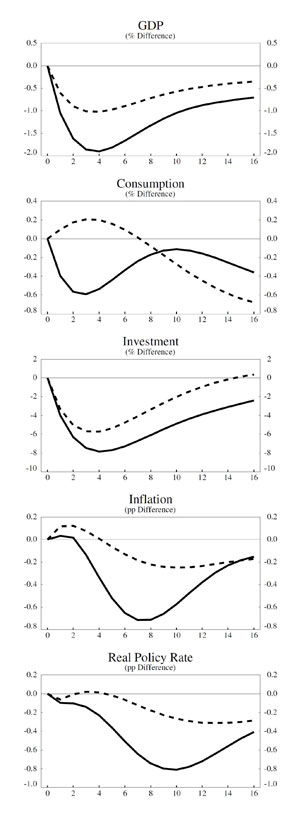Index And One Last Introduction To The Public And Its Problems By John Dewey
Posts in this series.
1. Introduction To New Series: The Public And its Problems by John Dewey
2. Why Read Old Books?
3. The Public And Its Problems By John Dewey
4. The Public In John Dewey’s The Public And Its Problems
5. What Would John Dewey Say About Court-Packing
6. Dewey On The State
7. Failing At Democracy
8. Dewey’s Functional Definition of Democracy
9. Dewey’s Aspirational View Of Democracy
10. Dewey’s Aspirational View Of Democracy
11. The Port Huron Statement
12. The Social Critique Of The Port Huron Statement
13. Democratic Values In Practice
14. Bad Habits Of Thinking Make It Hard To From Community
15. The Two Commmunitites And The Future Of Democracy
16. The Public’s Problem In Finding Itself
17. Final Thoughts On The Public And Its Problems
I’ve been promising to read this book for some time. I wrote Post 1, the original introduction, last March, but didn’t follow up for some of the reasons in the post; plus Stephanie Kelton’s excellent book The Deficit Myth seemed more important. I wrote Posts 1, 2, and 3 before I got very far into the book. Post 2 seemed like a decent reintroduction. But now that I’m well into the book I see it differently. It’s not a work of political science as I thought. It’s frankly philosophical. It brings Pragmatism to bear on the problem of government. That requires a different introduction, one in which I explain a bit of why I think this book is relevant today.
Early on in my writing here I discussed Thomas Kuhn’s book The Structure of Scientific Revolutions, written in 1962.
Kuhn starts by describing what he calls normal science: the day to day practice of scientists. Their work is based on an infrastructure consisting of theories of various strengths, instruments, and techniques that together make up a paradigm. This paradigm organizes their thinking so that they have an idea of what they are doing when they do physical and thought experiments. Kuhn says that normal science uses the paradigm to solve puzzles. The puzzles themselves are set up by the paradigm, and the scientist expects to be able to solve them using the rules and equipment of the paradigm.
That seems obvious in the case of physics and biology, but it’s also true in the social sciences. [1] We understand sociology, psychology, economics and political science through frameworks, which Kuhn calls paradigms, consisting of theories of various strengths, instruments, and techniques which we use to think about how our society works. These fields overlap in politics and government, and the paradigms do too.
There is a battle inside the Democratic Party between a group of centrists and a group of progressives. The battle pits progressive policies against the centrist’s drive for power. Progressives offer a range of policies that they believe will help the American people, such as Medicare For All, The Green New Deal, police and criminal law reform, and changes to laws that unfairly favor the rich and powerful, like tax laws. The centrists include both neoliberal corporatists and a bunch of mushy liberals. They claim there is a middle ground on every issue. They argue that the only important thing is winning more elections, They promise good stuff if they win, presumably mild improvements like the Dodd-Frank financial reform bill, or Obamacare. Nothing they propose is sufficient to the actual problems we face.
I think the Democratic Party lacks a paradigm of governance. There is no internal agreement on basic issues of governance or policy. [2] I am a progressive in the sense that I favor the policies they do. Those policies have wide support, but we aren’t winning. It’s worse than that. As a segment of the Democratic Party, progressives also lack a theory of governance, a paradigm shared by a large enough number of people that they would be in a position to actually govern. To see this, imagine that Bernie Sanders had been elected this year. How would he fill the thousands of Presidential appointment slots? Are there that meany people ready to govern who agree with his positions?
One good place to look for a paradigm is at the writings of John Dewey, including The Public And Its Problems. All of Dewey’s thinking is based on the philosophy of Pragmatism. [3] One reason I like Dewey is that he is a champion of small-d democracy. His life was devoted to making life better for all of us, using government at all levels.
In this post I suggestged an economic program for the left, hinged on Franklin Delano Roosevelt’s Four Freedoms speech from 1941 and Modern Money Theory. It still seems plausible to me, especially because MMT is based on a pragmatic approach to economics. Now I see that what I forgot was the crucial issue of a philosophy of governing, a philosophy of the reasons for governance, in short, a paraddigm.
To put that in everyday language, I mean a story about our nation that justifies and guides the actual practice of governance. That philosophy should offer a way to justify choice of policies, and a way of identifying the core group of supporters as people who agree with the paradigm and the choices it suggests. One good story is the US as the Can-Do Nation, a nation that loves problems and loves to solve them. I think that is a nice description of pragmatism in action.
A governance paradigm should begin by asking two philosophical questions: what is the nature of the individual, and how do we operate in the world. I think centrists accept the neoliberal answer to the first question: human individuals are atomized utility maximizing creatures, with little or no social connection. They think the problem is explaining why such atomized individuals would stick together. They argue that the answer is the social contract theory. That theory leads them to answer the second question with some form of compulsion as the reason human beings more or less behave.
Dewey flatly disagrees, as we saw in this post. As we go through this book, I plan to look for ideas that might be useful in a paradigm for progressives.
=======
[1] The post goes into a critique of economics that I would state differently today.
[2] I won’t air my grievances with the Democratic Party in detail here. I’ll just note that the party has done nothing for the economic well-being of people it asserts are its core constituencies: working people, unions, and especially Black and Brown working people. It has done practically nothing to restrain corporate power in any sphere of life. It has not tried to educate people about economic issues. For the most part it aligns itself with the Republicans on economic theory. It does little to defend its minor successes on social issues, and less to expand them. Inevitably the limits of action are imposed by the most conservative Senators, whether it’s Joe Lieberman or Joe Manchin.
[3]The word pragmatism refers to the American philosophy. I give a short primer on Pragmatism in three posts, here, here, and here. Also this.


